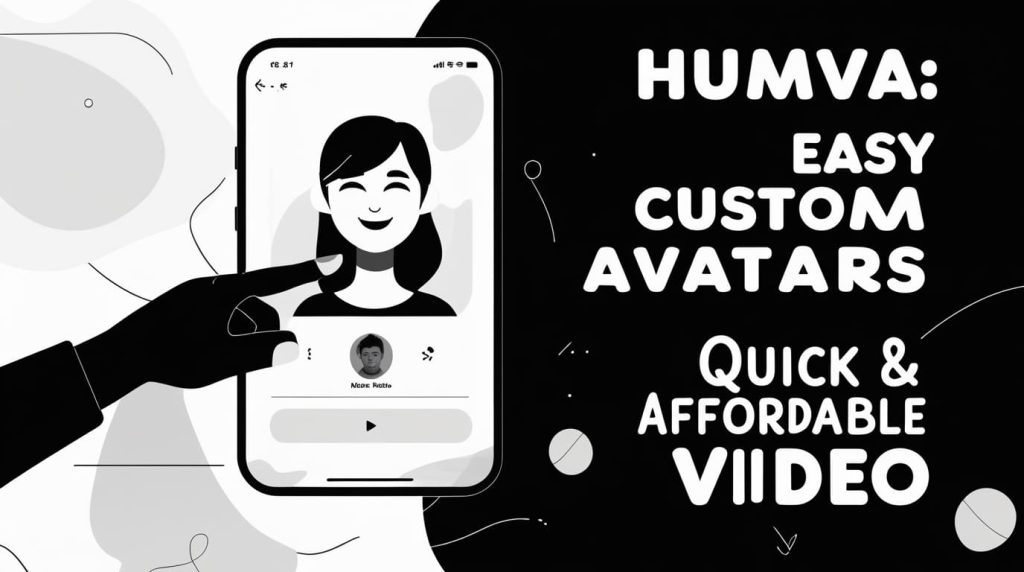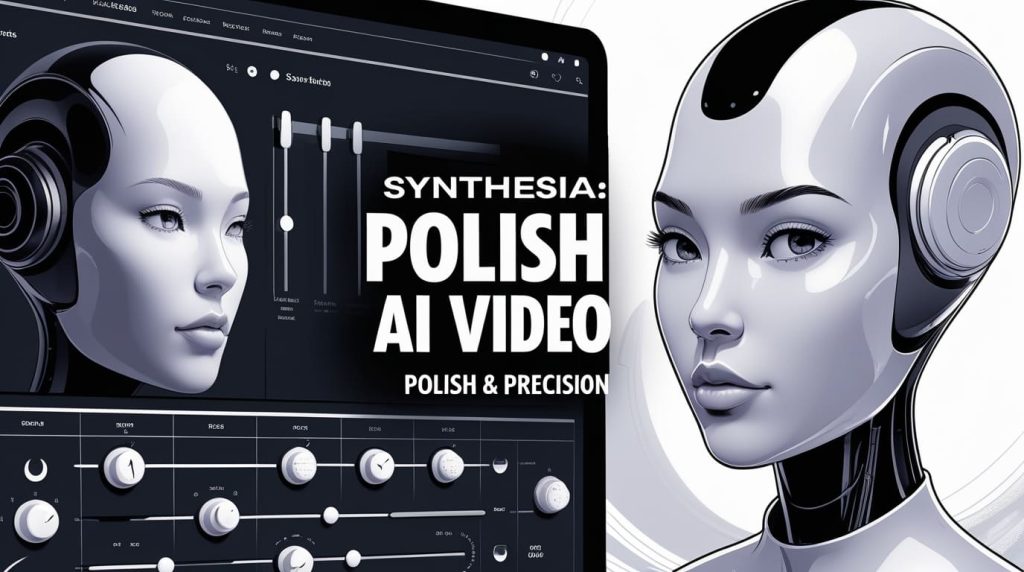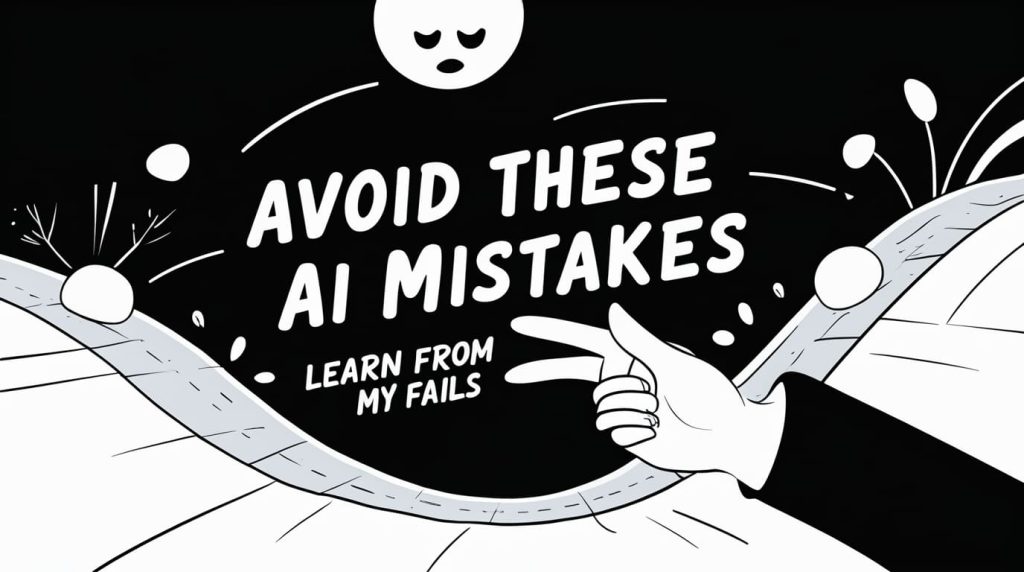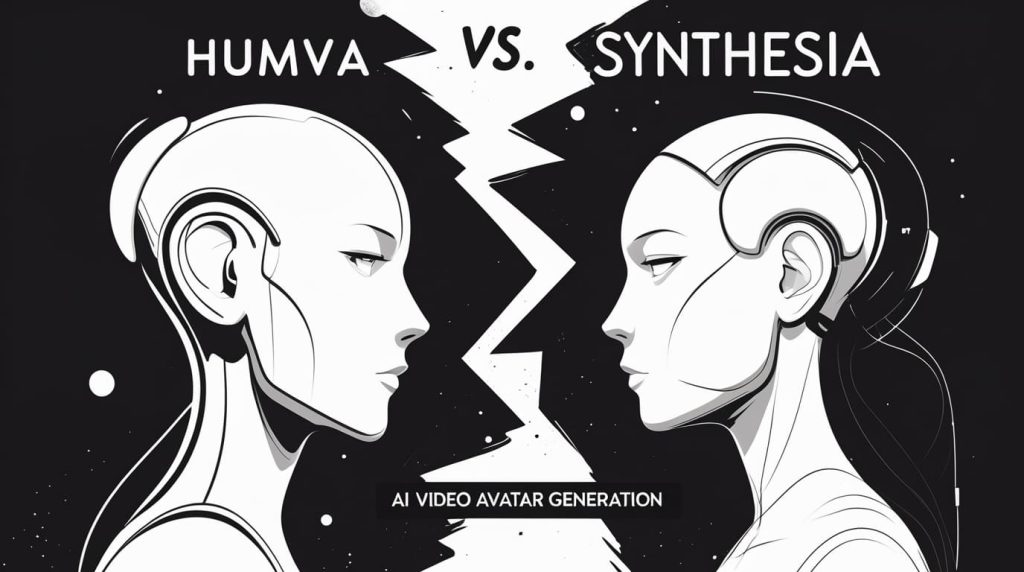You’re probably here because you’re wrestling with the same challenge I faced: how do you create engaging video content without a massive budget, a film crew, or even needing to be on camera yourself? It feels like AI video avatars are everywhere, promising to solve this, but cutting through the marketing hype to find what actually works is tough. I’ve spent some serious time diving deep into Humva and Synthesia, testing them side-by-side to see which one delivers. Here’s what I discovered.
Key Takeaways
- Best for Quality & Scale: Synthesia delivers truly polished, enterprise-grade AI video with advanced customization, making it ideal for high-stakes corporate communication.
- Best Budget Option & Simplicity: Humva offers an incredibly user-friendly and affordable entry point for quick, basic AI avatar videos, especially if you need a custom avatar fast.
- My Key Tip: No matter the tool, always factor in a little post-production polish if you’re aiming for that “flawless” look. AI is amazing, but a human eye for subtle tweaks still makes a difference.
Table of Contents
ToggleFirst, What Exactly Are We Talking About? A Quick AI Video Avatar Primer
Before we jump into my experiences, let’s quickly get on the same page about these AI video avatars. When I talk about “AI video,” I’m referring to content that artificial intelligence creates either from scratch or by significantly manipulating existing footage. Think of it as your digital puppet show, but instead of strings, you’re using text, images, or even your own voice as the input.

The Magic Behind the Pixels: How AI Avatars Work
At its heart, an AI video generator is a clever piece of software that uses machine learning and computer vision to transform your ideas into a talking head video. You type out a script, and the system uses natural language processing (NLP) to understand it and text-to-speech (TTS) to generate a natural-sounding voice. The really cool part? It then automatically synchronizes the avatar’s lip movements and facial gestures to match that voice, making it look like a real person is speaking. It’s all about algorithms trained on vast amounts of data to make those digital humans look and sound believable.
Why Even Bother with AI Video? (Beyond Just Being “Cool”)
The bottom line for me, and probably for you, is efficiency and impact. The traditional way of making videos is time-consuming and expensive. Actors, cameras, lighting, editing – it all adds up. AI video generators drastically cut down on production time and cost, making high-quality video accessible for everyone from small businesses to large enterprises. I’ve seen it used for everything from internal training modules to product demos and even marketing ads. The ability to quickly localize content into multiple languages is a huge plus, too.
My Experience with Humva: Affordable Power for Quick Videos
When I first heard about Humva, it piqued my interest because it positioned itself as an “easy go-to avatar tool” with a focus on accessibility and user-friendliness. As someone who appreciates a straightforward workflow, I was ready to dive in.
Related Posts
Getting Started with Humva: My First Impressions of the Interface
Signing up for Humva was pretty painless, and I was greeted with a clean, intuitive interface. It didn’t feel cluttered or overwhelming, which is a big win if you’re new to AI video. The main dashboard gave me quick access to templates and the option to start a new video, which I appreciated. I found it truly was designed for easy adoption, even for first-time users.

Avatar Options & Customization: Building My Digital Spokesperson
Humva boasts an impressive library of over 1000 lifelike AI avatars and a huge selection of voice options. I scrolled through their extensive templates and saw a good range suitable for professional presentations, social media, and even testimonials. What really caught my eye was the one-photo custom avatar creation. This meant I could upload a picture and have Humva generate an avatar that looked like me. This is fantastic for personal branding or for small businesses who want a consistent, recognizable spokesperson without hiring an actor. My custom avatar wasn’t perfectly identical, but it captured my likeness surprisingly well for a single photo.
Scripting, Voices, and Lip-Sync: The Core Performance Test
The scripting interface in Humva was straightforward. I typed in my script, selected an avatar, and then chose from their vast library of 1600+ realistic AI voices across 140+ languages, powered by Microsoft and Elevenlabs. The process was quick, and within minutes, my video was ready. Humva also claims “precise lip-syncing for seamless storytelling,” and I was eager to see that in action.
The Good, The Bad, and The “Wait, What?”: My Honest Output Review
For quick, informative videos, Humva delivered. The avatars had natural gestures, and the lip-syncing was generally good, especially for basic scripts. I found the quality to be quite acceptable for internal communications or social media posts where perfect realism isn’t the absolute highest priority. However, I did notice the “uncanny valley” effect creeping in sometimes, especially with longer sentences or more complex emotional expressions. It wasn’t consistently “flawless” right out of the box. The maximum video length is also 3 minutes, which is a key limitation for longer content.
Humva’s Pricing: What I Got for My Buck
Humva offers a free trial, which is awesome for testing the waters. Their paid options start from around $19/month. For the features it provides, especially the custom avatar creation at that price point, I think it offers great value for individual creators or small businesses on a tighter budget. It feels very accessible, and that’s a huge plus in my book.
My Experience with Synthesia: Enterprise-Grade, Polished Production
Synthesia has a reputation as a leader in the AI video space, with over 90% of Fortune 100 companies trusting it. This immediately set my expectations high for a polished, robust platform.
Diving into Synthesia: My First Impressions of the Interface
Navigating Synthesia’s platform felt familiar but definitely more feature-rich. It has a professional, enterprise-focused layout. I found the learning curve to be slightly steeper than Humva’s, not because it’s poorly designed, but because it offers so many more options and deeper customization. It’s built for scale and complex video projects, which means more controls to learn.

Avatar Variety & Personal Avatars: Beyond the Basics
Synthesia boasts an impressive library of over 230 diverse AI avatars and supports 140+ languages.What truly stands out for businesses is their capability to create “Personal Avatars” from just two minutes of webcam footage. I found this incredibly powerful for establishing consistent brand identity across all video communications. The avatars generally felt more refined, with a broader range of expressions and gestures that you can fine-tune in the editor.
Scripting, Voices, and Fine-Tuning: The Pursuit of Perfection
Synthesia’s script editor is where it really shines for professional users. Beyond just typing text, I could add specific gestures, control pauses, and even fine-tune the emotion of the AI voice. The platform’s commitment to scalability and localization means translating videos into multiple languages is a breeze, with options to edit and customize those translations. This level of control allows for a much more nuanced and authentic delivery, which is crucial for high-quality content.
The Polish and the Pitfalls: My Honest Output Review
The videos I generated with Synthesia consistently had a higher level of polish. The lip-syncing was often more precise, and the facial expressions felt more natural, getting closer to what I’d consider “flawless.” However, I must echo a common sentiment I found on Reddit: while Synthesia is top-tier, the most “flawless” outputs often involve a little human finessing in post-production. Even the best AI still benefits from a keen human eye for those subtle imperfections that can push a video from “great AI” to “wow, is that real?”
Synthesia’s Pricing: Is the Investment Worth It?
Synthesia’s pricing isn’t publicly listed in detail on their main site; they offer a “free video” to try, then move to custom enterprise-level plans. However, from my research, it’s generally understood to be significantly more expensive than tools like Humva, with plans potentially starting around $30/month or higher for basic subscriptions and escalating quickly for advanced features and usage. Given its robust feature set, high-quality output, and enterprise focus, I’d say the investment is absolutely worth it for businesses that need scalable, professional, and highly customizable AI video content.
Humva vs. Synthesia: The Direct Showdown (Comparison Table)
To help you quickly decide, I put together this comparison based on my tests and research:
Key Differences at a Glance: A Decision-Making Matrix
| Feature | Humva | Synthesia | My Takeaway |
| Primary Focus | Quick, accessible, user-friendly AI avatars | Enterprise-grade, scalable AI video communication | Humva for individuals/small teams; Synthesia for businesses. |
| Ease of Use | Very user-friendly, low learning curve | User-friendly, but more features mean more to learn | Humva is quicker to start; Synthesia has deeper control. |
| Avatar Library | 1000+ lifelike AI avatars | 230+ diverse AI avatars | Humva has more quantity; Synthesia has higher quality/polish. |
| Custom Avatars | Yes, from one photo | Yes, “Personal Avatars” from webcam footage | Both offer custom, Synthesia’s is more advanced. |
| Voice Options | 1600+ voices, 140+ languages (MS/Elevenlabs) | 140+ languages | Both excellent, Humva’s library number is impressive. |
| Lip-Sync/Realism | Good, some “uncanny valley” moments | Excellent, very close to natural | Synthesia consistently wins on realism. |
| Customization | Basic avatar styling, script input | Advanced gestures, emotions, fine-tuning | Synthesia offers granular control for professional output. |
| Max Video Length | 3 minutes | Varies by plan, can be much longer | Synthesia is better for longer-form content. |
| Collaboration | Not a primary feature | Robust team collaboration tools | Synthesia built for team workflows. |
| Pricing | Free trial, starts ~$19/month | Free demo, then custom/enterprise pricing | Humva is budget-friendly; Synthesia is a bigger investment. |
| Ideal For | Social media, quick explainers, personal use | Corporate training, marketing, large-scale content | Depends heavily on your specific needs and budget. |
Who Should Use Which? My Recommendations for Your Projects
After putting both tools through their paces, here’s my honest take on who benefits most from each:
Choose Humva If… (Budget, Quick Turnaround, Simplicity)
- You’re an individual creator, a small business, or just starting out with AI video. Humva’s accessible pricing and intuitive interface make it a low-risk way to experiment and create content.
- You need quick, straightforward videos. For social media updates, simple explainers, or personalized greetings, Humva can get the job done fast.
- You prioritize ease of use and a fast workflow. If you want to go from script to video in minutes without a steep learning curve, Humva is your friend.
- A custom avatar from a single photo is important to you. It’s a fantastic feature for brand consistency on a budget.
Go with Synthesia If… (High-End Professionalism, Scale, Custom Branding)
- You’re an enterprise, a larger marketing team, or an educational institution. Synthesia is built for scale, complex projects, and high-stakes communication.
- You demand the highest possible quality and realism from your AI avatars. While no AI is perfect, Synthesia consistently delivers some of the most polished results on the market.
- You need advanced customization and control over avatar performance. Gestures, emotions, and fine-tuned timing are all possible, allowing for truly expressive videos.
- Multilingual content and seamless localization are crucial. Synthesia’s translation and editing features are top-notch for global audiences.
- Team collaboration and integration into existing workflows are a must. Its features are designed for professional production environments.
Common Mistakes I Made (and How You Can Avoid Them!)
Through my testing, I learned a few things the hard way that might save you some headaches:

- Expecting Human Perfection from the First Click: Many people, myself included, see those hyper-realistic AI videos online and assume the tool churns out perfection every time. As Reddit users pointed out, the base output is decent, but that “flawless” look often comes from some post-production finessing. Don’t get discouraged if your first few videos aren’t Hollywood-ready.
- Ignoring the “Uncanny Valley”: Both tools are getting better, but the “uncanny valley” effect – where an avatar looks almost human but slightly off – is still a real thing. Pay attention to facial expressions and eye movements. Sometimes, a slightly less “realistic” avatar can feel more natural than one teetering on the edge of uncanny.
- Unclear or Flat Scripts: AI avatars are only as good as the script you give them. If your script is monotone or lacks natural pauses and emphasis, your avatar will reflect that. Take the time to write a natural-sounding script, and utilize any gesture/emotion controls the platform offers.
My Final Verdict on AI Video Avatar Generation
So, what’s the bottom line? Both Humva and Synthesia are powerful tools, but they cater to different needs and budgets. If you’re looking for an affordable, easy-to-use solution for quick, good-quality AI videos, Humva is a solid choice. It truly democratizes AI video creation. But if you need enterprise-grade polish, advanced customization, and the ability to scale high-quality video production, Synthesia is the clear leader. It’s an investment, but one that pays off in professional results.
My last tip: always keep your audience in mind. While AI avatars are incredibly efficient, there are still scenarios where a human presenter or traditional video might connect better. Think about the purpose of your video and who you’re trying to reach.
What tools have you tried? Share your results in the comments below! I’d love to hear your experiences and any “aha!” moments you’ve had. 🙂





